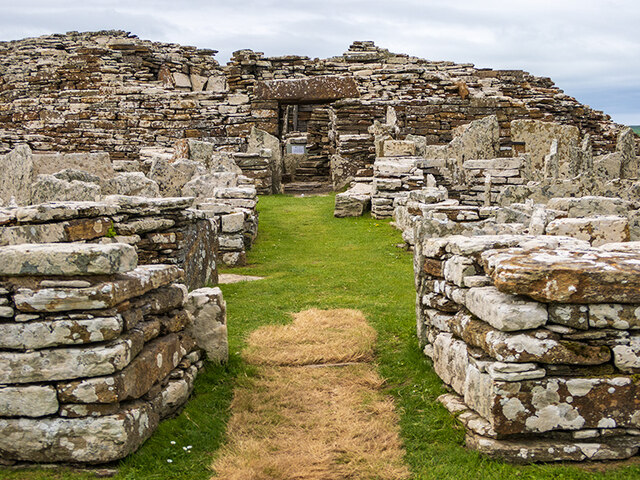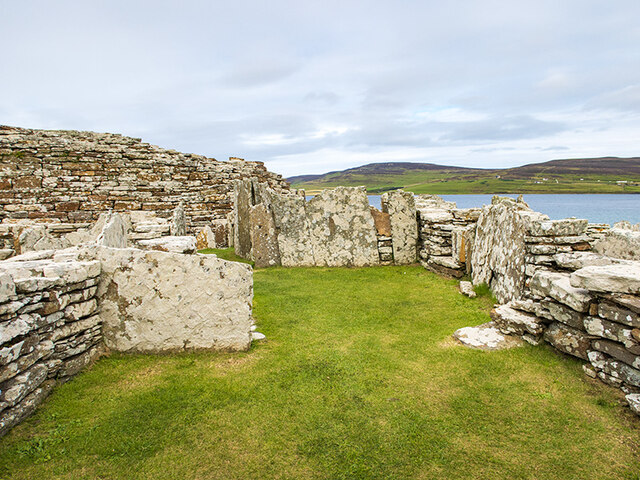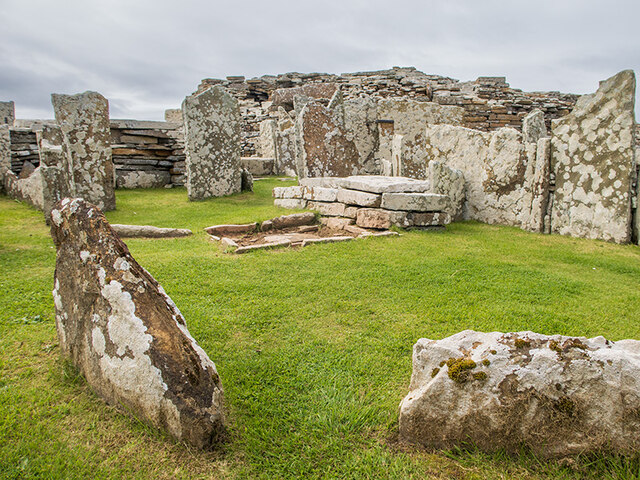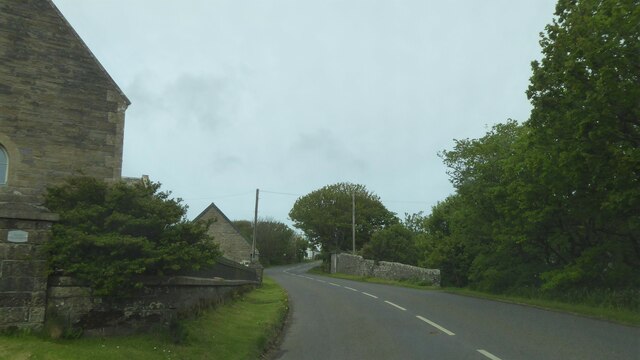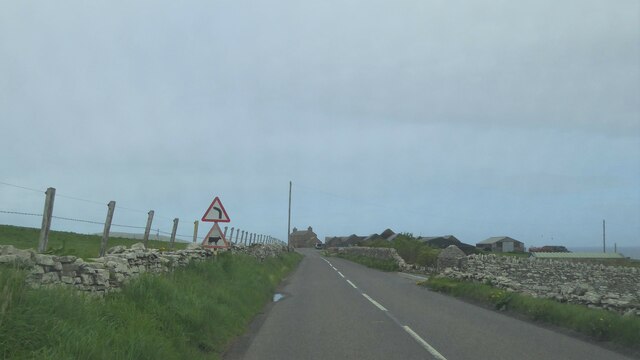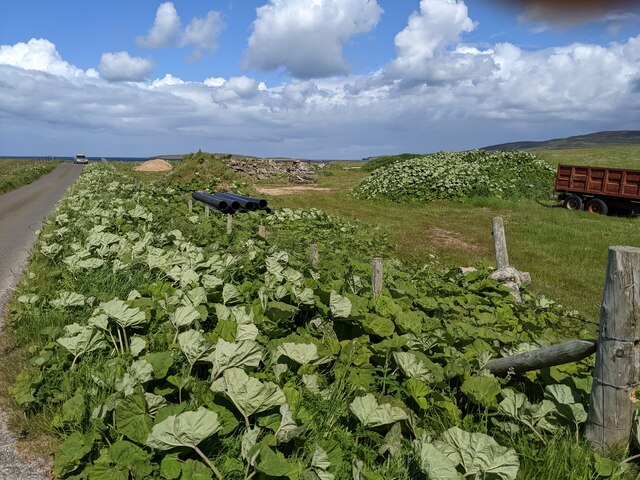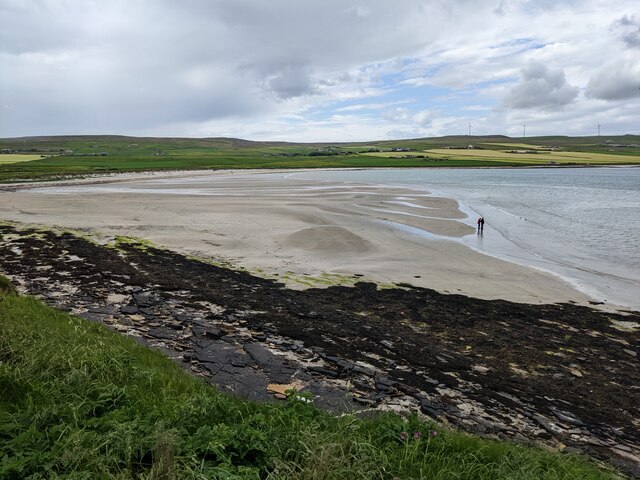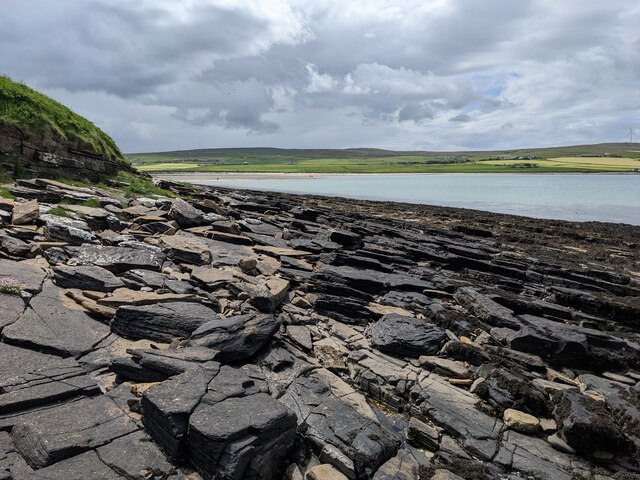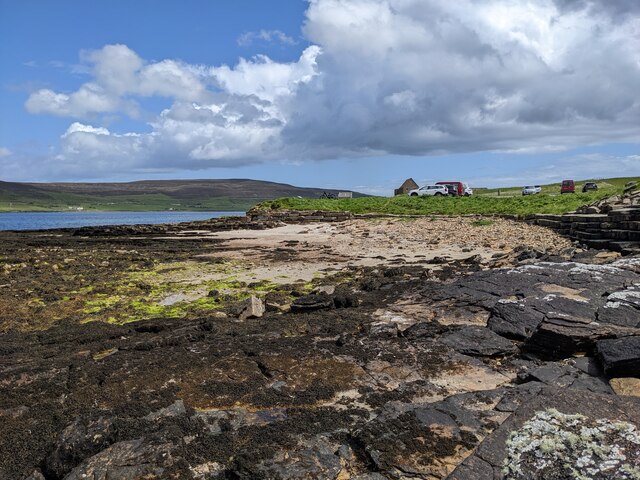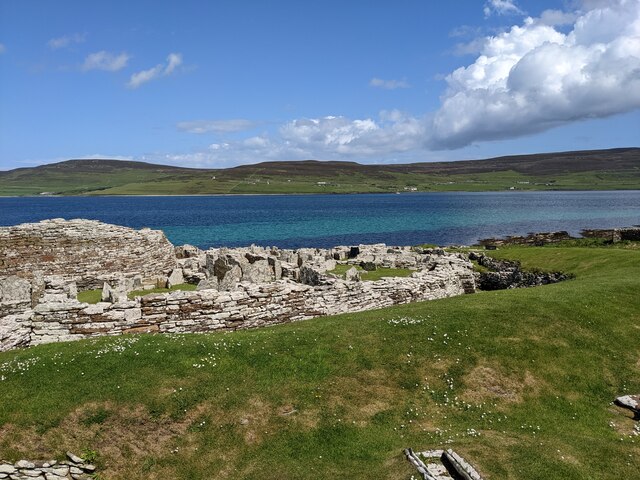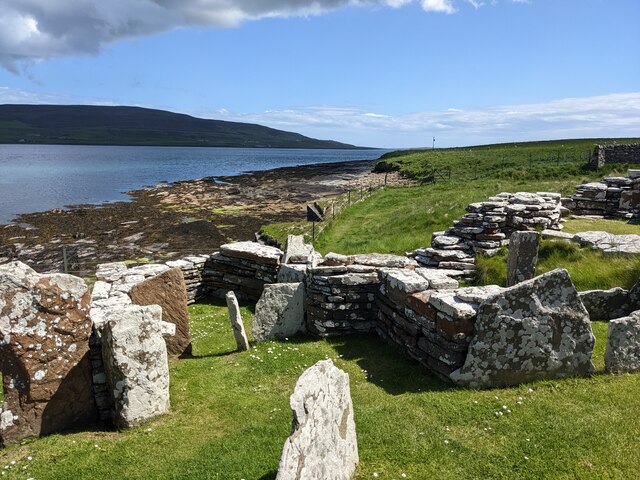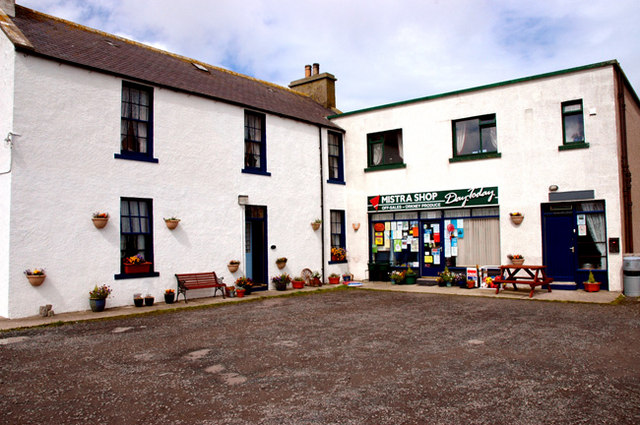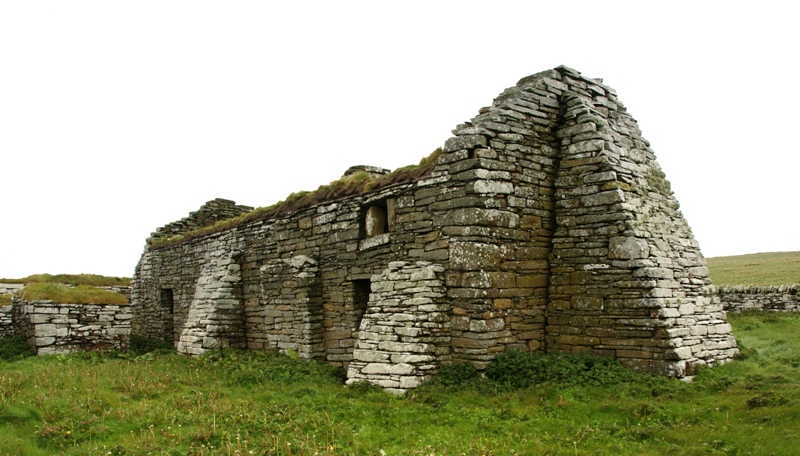Grit Ness
Coastal Feature, Headland, Point in Orkney
Scotland
Grit Ness
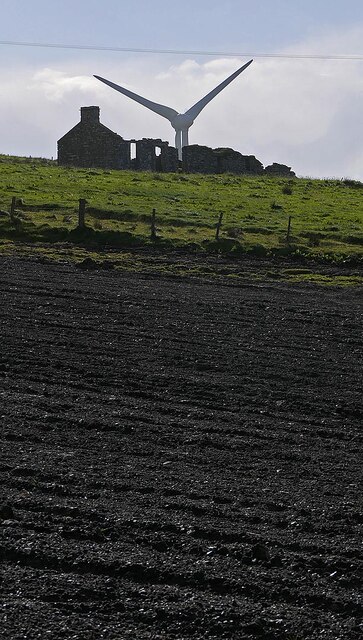
Grit Ness is a prominent coastal feature located in Orkney, a group of islands situated off the northeastern coast of Scotland. It is specifically classified as a headland or point, protruding into the North Sea.
Grit Ness is known for its rugged and rocky terrain, formed by the constant erosion of the waves crashing against its shores. The headland is characterized by steep cliffs that rise dramatically from the sea, providing a picturesque and awe-inspiring landscape. The rocks that comprise Grit Ness are predominantly composed of sedimentary materials, including sandstone and shale, giving it its distinctive appearance.
The area surrounding Grit Ness is rich in biodiversity, attracting a variety of bird species and marine life. It is a popular spot for birdwatching, with species such as puffins, guillemots, and kittiwakes frequenting the cliffs. Seals and dolphins can also be spotted swimming in the waters nearby.
Grit Ness holds historical significance as well, with remnants of ancient settlements and archaeological sites scattered across the headland. These sites provide evidence of human occupation dating back thousands of years, contributing to the historical and cultural heritage of the region.
The headland is easily accessible and offers stunning panoramic views of the surrounding sea and landscape. It is a popular destination for hikers, nature enthusiasts, and photographers, offering opportunities for exploration, wildlife observation, and appreciation of the natural beauty of Orkney.
If you have any feedback on the listing, please let us know in the comments section below.
Grit Ness Images
Images are sourced within 2km of 59.12286/-3.1068044 or Grid Reference HY3626. Thanks to Geograph Open Source API. All images are credited.
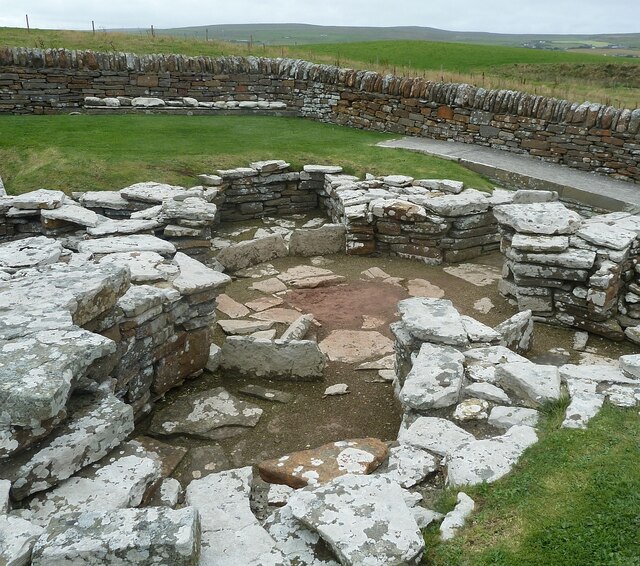
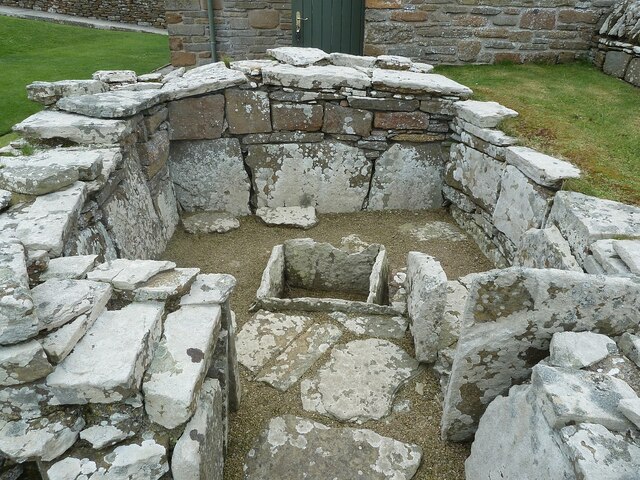
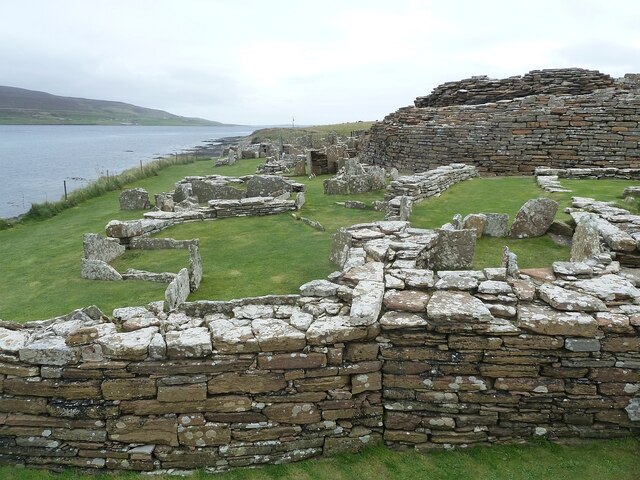
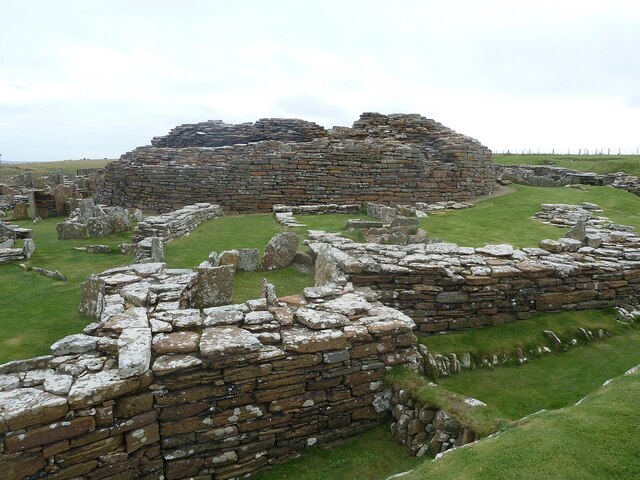
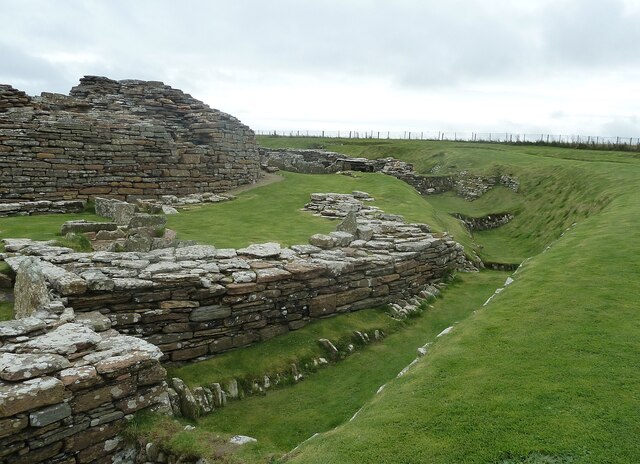
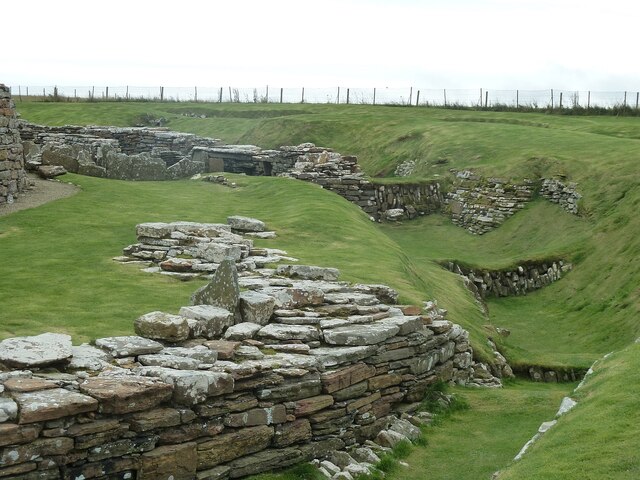
Grit Ness is located at Grid Ref: HY3626 (Lat: 59.12286, Lng: -3.1068044)
Unitary Authority: Orkney Islands
Police Authority: Highlands and Islands
What 3 Words
///relaxing.whisker.ourselves. Near Evie, Orkney Islands
Nearby Locations
Related Wikis
Aikerness Bay
Aikerness Bay is an embayment of Eynhallow Sound on the northwest coast of Mainland Orkney, Scotland. The headlands of Point of Hellia at the east and...
Sands of Evie
The Sands of Evie is a sandy beach landform near the village of Evie on Mainland Orkney, Scotland, protected by the Point of Hellia headland. This beach...
Point of Hellia
The Point of Hellia is a headland on the northwest coast of the Orkney Mainland, Scotland. This landform extends into the southern part of Eynhallow Sound...
Evie, Orkney
Evie (pronounced ) is a parish and village on Mainland, Orkney, Scotland. The parish is located in the north-west of the Mainland, between Birsay and Rendall...
Broch of Gurness
The Broch of Gurness is an Iron Age broch village on the northeast coast of Mainland Orkney in Scotland overlooking Eynhallow Sound, about 15 miles north...
Eynhallow Sound
Eynhallow Sound is a seaway lying between Mainland Orkney and the island of Rousay in the Orkney Islands, Scotland. The tidal indraught is "scarcely felt...
Eynhallow Church
Eynhallow Church is a ruined medieval church located on the uninhabited island of Eynhallow in Orkney, Scotland. The church dates back to the 12th-century...
Eynhallow
Eynhallow (Scots: Eynhallow; Old Norse: Eyinhelga; Norn: Øjinhellig) is a small, presently uninhabited island, part of Orkney, off the north coast of mainland...
Have you been to Grit Ness?
Leave your review of Grit Ness below (or comments, questions and feedback).
